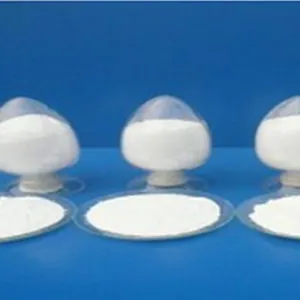
preservative used in bread
The Role of Preservatives in Bread Ensuring Freshness and Safety
Bread, a staple food in many cultures, has evolved significantly over the years. From traditional baking methods to industrial production, the quest for freshness, safety, and shelf life has led to the use of various preservatives. Understanding the role of preservatives in bread, along with their benefits and potential concerns, is essential for both consumers and bakers.
The Need for Preservatives
Preservatives are substances added to food products to prevent spoilage, extend shelf life, and maintain quality. The primary goal in bread-making is to create a product that remains fresh for as long as possible. Factors such as moisture content, air exposure, and microbial growth can lead to spoilage. Bread, being high in carbohydrates and moisture, is particularly susceptible to mold and staleness.
In the modern baking industry, a variety of preservatives are used to combat these issues, including sorbates, propionates, and calcium propionate. These additives inhibit the growth of mold and bacteria, ensuring that consumers receive fresh bread even weeks after production.
Common Preservatives Used in Bread
1. Calcium Propionate One of the most widely used preservatives, calcium propionate is effective against mold and some bacteria. It works by lowering the pH level of the bread, creating an environment that is inhospitable to microbial growth. It is considered safe by the FDA and is commonly used in commercial bread products, particularly in sandwich loaves.
2. Sodium Benzoate and Potassium Sorbate These preservatives are also employed for their antifungal properties. They are effective at low concentrations and can extend the shelf life of bread without significantly affecting its taste or texture.
3. Ascorbic Acid While primarily used as a dough conditioner to strengthen gluten, ascorbic acid also possesses antioxidant properties that can help improve the shelf life of bread. It helps maintain the freshness of the bread by preventing oxidation, which can lead to rancidity.
preservative used in bread

Benefits of Using Preservatives
1. Extended Shelf Life Preservatives significantly prolong the freshness of bread, which is particularly advantageous for commercial bakeries and retailers. This not only reduces food waste but also allows consumers to purchase bread without the immediate concern of spoilage.
2. Safety and Quality By inhibiting the growth of harmful microorganisms, preservatives enhance the safety of bread. This is especially important for products that may be stored for extended periods or transported over long distances.
3. Consistency in Production The use of preservatives allows for more consistent quality in bread products. Bakeries can maintain uniform taste, texture, and appearance, meeting consumer expectations consistently.
Concerns Surrounding Preservatives
Despite their benefits, the use of preservatives in bread has raised concerns among consumers. Some individuals prefer natural or organic products free from synthetic additives. There is a growing trend towards cleaner labels, where consumers seek out bread that is made with fewer ingredients and no preservatives. This has led some bakeries to explore alternative methods of preserving bread, such as using fermentation or natural extracts.
Furthermore, while most preservatives are generally recognized as safe, some individuals may experience sensitivities or allergic reactions. It’s crucial for consumers to be aware of the ingredients listed on packaging and to choose products that align with their dietary preferences.
Conclusion
Preservatives play a vital role in modern bread-making, providing numerous benefits such as extended shelf life, enhanced safety, and consistent quality. As the demand for fresh, safe, and high-quality bread continues to rise, understanding the function and necessity of these additives becomes increasingly important. While some consumers may opt for preservative-free options, the role of preservatives in ensuring that bread remains a staple part of our diet is undeniable. Ultimately, informed choices can help consumers navigate the world of bread and preservatives, balancing safety, quality, and personal preferences.
-
Buy High-Quality Trichloroisocyanuric Acid for Sale | TCCA 90% SupplierNewsAug.30,2025
-
Pure Sodium Dichloroisocyanurate Dihydrate | Powerful DisinfectantNewsAug.29,2025
-
Industrial Chemicals: Quality & Purity for Every IndustryNewsAug.28,2025
-
Nitrile Rubber Honoring Strict Production StandardsNewsAug.22,2025
-
Aspartame Ingredients Honoring Food Safety ValuesNewsAug.22,2025
-
Fertilizer for Balanced Plant NutritionNewsAug.22,2025
-
Cyanide Gold Processing with High Purity AdditivesNewsAug.22,2025
Hebei Tenger Chemical Technology Co., Ltd. focuses on the chemical industry and is committed to the export service of chemical raw materials.
-

view more DiethanolisopropanolamineIn the ever-growing field of chemical solutions, diethanolisopropanolamine (DEIPA) stands out as a versatile and important compound. Due to its unique chemical structure and properties, DEIPA is of interest to various industries including construction, personal care, and agriculture. -

view more TriisopropanolamineTriisopropanolamine (TIPA) alkanol amine substance, is a kind of alcohol amine compound with amino and alcohol hydroxyl, and because of its molecules contains both amino and hydroxyl. -

view more Tetramethyl Thiuram DisulfideTetramethyl thiuram disulfide, also known as TMTD, is a white to light-yellow powder with a distinct sulfur-like odor. It is soluble in organic solvents such as benzene, acetone, and ethyl acetate, making it highly versatile for use in different formulations. TMTD is known for its excellent vulcanization acceleration properties, which makes it a key ingredient in the production of rubber products. Additionally, it acts as an effective fungicide and bactericide, making it valuable in agricultural applications. Its high purity and stability ensure consistent performance, making it a preferred choice for manufacturers across various industries.





